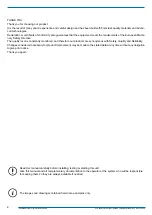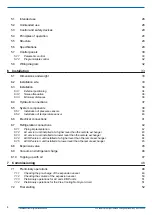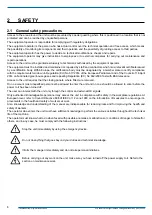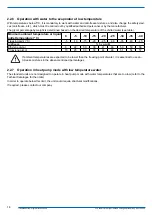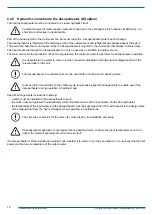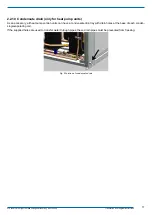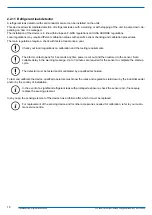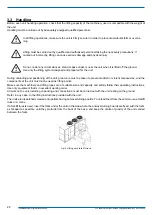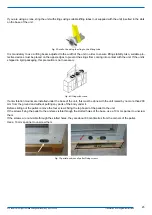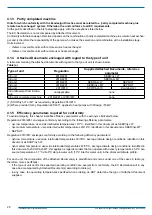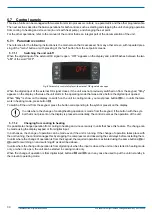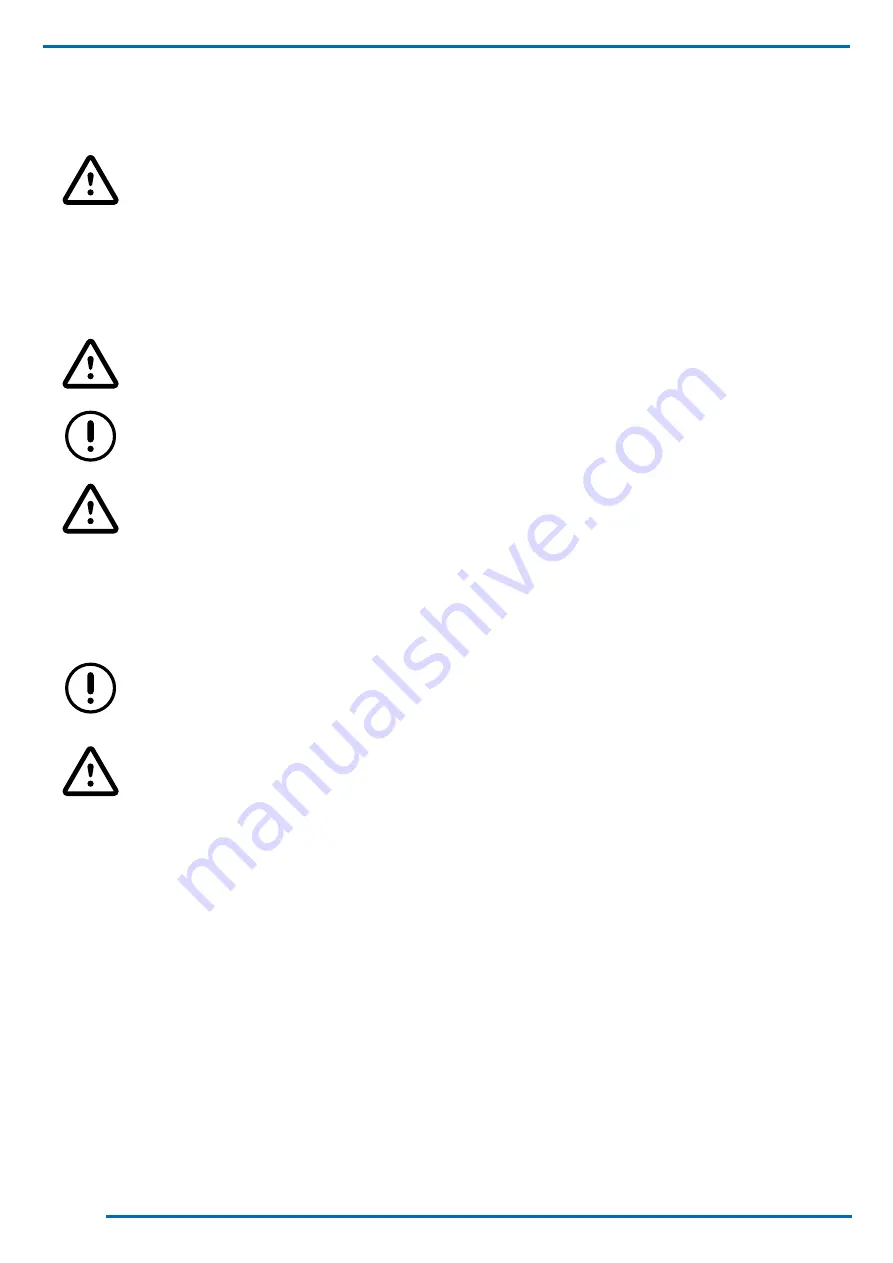
16
We reserve the right to make changes without any prior notice.
Translation from original instructions
2.2.9 Hydraulic connection to the desuperheater (DS option)
The heat desuperheater must be connected to a closed hydraulic circuit.
Constant renewal of water causes limescale to build up in the exchanger, which reduces its efficiency in a
short time and makes it unserviceable.
Part of the heat rejected in the condenser can be recovered with a “desuperheater” water heat exchanger.
The desuperheater is installed on the discharge side of the compressors and refrigerant gas always passes through it.
The part of the heat that is not recovered by the desuperheater is rejected in the condenser that always remains active.
The heat recovered through the desuperheater can only be used as an addition to another source.
The main source for the production of heat must guarantee the minimum water temperature for desuperheater operation.
It is essential for the water to come in at the connection indicated in the dimensional diagram and with the
relevant label on the unit.
The desuperheater in reversible units can be used both in cooling and in heating mode.
Units set up for reversibility on the chilling cycle require taking specific arrangements to enable use of the
desuperheater during operation in heating mode.
Specific arrangements include the following:
- a valve must be installed in the desuperheater circuit;
- the valve must be operated to automatically control the temperature of the input water into the desuperheater;
- the temperature of the input water into the desuperheater must be kept higher than 10 K with respect to the design value
of the output water from the heat exchanger, when operating in heating mode.
The client has to provide for the valve, its control device, its installation and setup.
If desuperheater operation is not required during heating mode, or where the input temperature is not con
-
trolled, the relevant hydraulic circuit must be shut off.
If a desuperheater is fitted, included in heating mode, whether it is used or not, it has an impact on (i.e. reduces) the thermal
power and the max. temperature of the output water.

